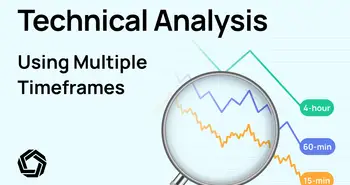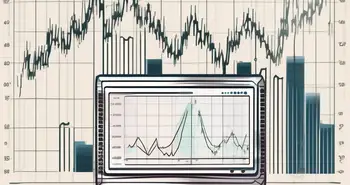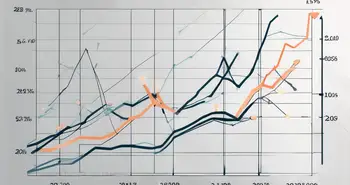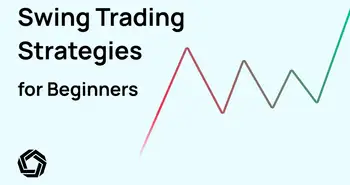Fundamental vs Technical Analysis: Which is More Effective?
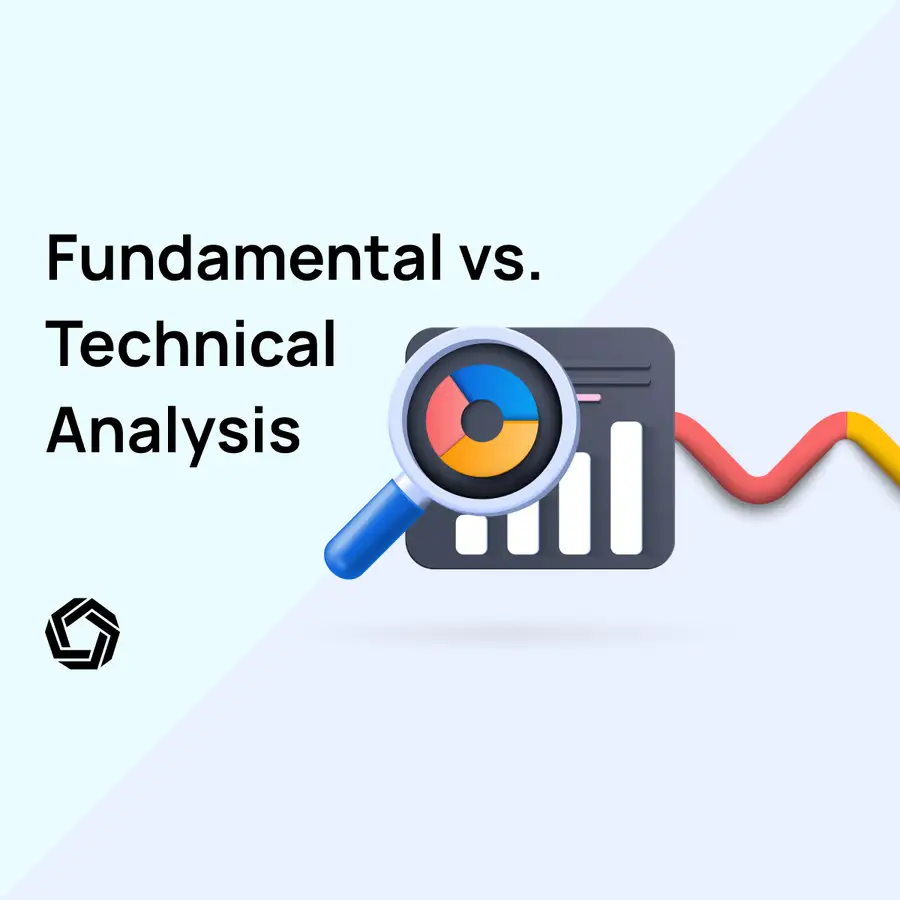
Fundamental and technical analysis are the two dominant schools of thought that drive the economic sphere of purchasing and selling assets.
Fundamental analysis seeks to understand an asset’s intrinsic value. This school of thought aims to discover whether an investment is undervalued or overvalued based on its financials.
Technical analysis seeks to discover the future price action of an asset through the use of market activity. This school of thought uses prior data to establish patterns and predict future movements.
This article will explore both schools of thought, their relative strengths and weaknesses, and advocates for a hybrid approach blending fundamental and technical analysis. First, fundamental analysis will be discussed, and the underlying methodology of this approach. Second, technical analysis will be discussed along with its methodology and key concepts. Finally, an argument as to why investors should employ a dual system and the benefits of this blended strategy.
Throughout this article, asset will be used to refer to something fungible and holds monetary value. Readers should hold in mind that this article was written primarily to address stocks and digital currencies.
Some broad strokes will help elucidate the overall article content. Fundamental analysis typically skews toward investors with a longer time horizon more interested in holding the stock for a significant period, often five to ten years. In contrast, technical analysis skews towards shorter-term investors or traders looking to capitalize on momentum and swings in price action over a smaller time window. The word investor naturally attaches itself to fundamental analysis, and the word trader attaches itself to technical analysis. These present the two broad camps, but there are litanies of smaller schools within each larger group.
Fundamental Analysis
Fundamental analysis, at its core, seeks to determine the fair value of a stock. Investors analyze the company’s economic engine and health by combing through the financials and judging whether it is overpriced or underpriced. All of these techniques can be found in stock market books for beginners. Fundamental analysis cannot be discussed without mentioning Benjamin Graham. Author of The Intelligent Investor, the most popular book of fundamental analysis ever written, and the father of the value investing movement that counts investors such as Peter Lynch and Carlie Munger as its disciples.
‘Invest only if you would be comfortable owning a stock even if you had no way of knowing its daily share price.’
Benjamin Graham
This pithy line dives at the heart of the fundamental analysis-driven value investing approach. Investors drown out the short-term noise and focus on making long-term gains by picking underpriced stocks. Fundamental analysis helps investors understand what they are purchasing and why. And this represents the greatest strength of fundamental analysis- the what and the why.
Fundamental analysis is thesis-driven, and investors who believe a stock to be underpriced, a good time to buy, or overpriced, a good time to sell, have a thesis. Investors possessing a thesis have solid foundations and can easily navigate market volatility.
Another core principle of fundamental analysis is the irrational behavior of the market, and fundamental analysis runs counter to the efficient-market hypothesis, which states, “the price of an asset reflects all relevant information that is available about the intrinsic value of the asset.” In other words, the market has priced everything in. Fundamental analysis relies on market inefficiencies in pricing and explains how specific investors have consistently outperformed the S&P 500, which acts as the benchmark for performance.
Fundamental analysis’s core value to investors is its provision of a thesis and a deeper understanding of what they are buying. This investment style relies on a company’s financials and distances itself from market psychology. If you are interested in Fundamental Analysis, you should continue reading about it in the Best Investing Books.
Steps Involved In Fundamental Analysis
Investors must understand the company's environment, as the environment will influence the fair value of a stock/ its intrinsic value. Gross Domestic Product (GDP) presents a quick, efficient, and broad way to understand the economy. A GDP that grows consistently presents the best climate for business growth. How stable is the country? Is inflation running hot? How high are interest rates? All of these factors will impact an enterprise's ability to do business. Once an investor has grasped the general state of the economy, they move on to the industry’s overall strength and any developing trends within it.
How competitive is the industry? How stringent are government regulations? Are labor and raw material costs stable or variable? What is the demand-supply gap? Demand tends to grow steadily, and production increases faster, leading to oversupply and reducing profitability. How technology-proof is the industry? As technology marches forward, industries get replaced. After studying the industry, the investor focuses on the specific company/ stock in question.
Investors will undertake two paths of study when researching the company: qualitative and quantitative.
Qualitative research involves management style, corporate governance, competitive advantage, industry positioning, and, most importantly, the business model.
Quantitative research involves the balance sheet, the income statement, and cash flows.
Regarding qualitative. Investors, first of all, need to understand the business model. This is what Peter Lynch commonly referred to as ‘the story.’ How does the company make money? This is not always as simple as it may appear. And what has to happen for the stock price to increase? For example, a retailer selling clothes may be ready to open more stores nationwide. Investors first understand the nature of the business and its growth stage, then create a thesis on how the business can improve its revenue and, thereby, its stock price.
“Although it’s easy to forget sometimes, a share of stock is not a lottery ticket. It’s part ownership of a business.”
Peter Lynch, One Up On Wall Street
Corporate governance is how the business is run- the practices in places that control the firm’s operations and the interaction between shareholders and company executives. Management plays a critical role, and investors should investigate and scrutinize the leadership; how did they perform in prior roles? Another keen insight from Peter Lynch is stock ownership amongst management. Management who have dumped stock recently should act as a red flag for investors. When management owns stock and is heavily invested, this is a good sign and means rewarding shareholders will be a higher priority.
Regarding quantitative. When it comes to analyzing quantitative data, many successful investors made an incredible fortune pouring over annual reports and 10-Ks. A 10-K is a report required by the SEC annually that reports its financial statements, organizational structure, earnings per share, and lots of other quantitative data on the company. Investors first look at the balance sheet. The balance sheet provides a snapshot of assets, equity, and liabilities at a specific point in time. Investors will also study a business's cash flow: a company that makes more cash than it spends is naturally more attractive than a company that spends more cash than it makes. A company with a positive cash flow can often herald an increased future valuation through dividend payments, stock buybacks, or debt reduction.
Finally, the income statement. This shows profit and losses (revenue vs. expenses) over a specific period and gives the investor an x-ray vision of how much the company makes, but also how the company generates this revenue. This is incredibly useful for making intra-industry comparisons. Another standard metric utilized for industry comparisons is the P/E ratio (price to earnings ratio) which measures the current share price against its earnings per share (EPS). A high P/E means one of two things: the stock is overvalued, or investors expect huge future growth.
Fundamental analysis leverages raw financial data and numbers to judge whether a stock trades at an attractive price and focuses on the long-term growth of the underlying company. It can be neatly summarized with an excerpt:
“The basic story remains simple and never-ending. Stocks aren’t lottery tickets. There’s a company attached to every share. Companies do better or they do worse. If a company does worse than before, its stock will fall. If a company does better, its stock will rise. If you own good companies that continue to increase their earnings, you’ll do well. Corporate profits are up fifty-five-fold since World War II, and the stock market is up sixtyfold. Four wars, nine recessions, eight presidents, and one impeachment didn’t change that”
Peter Lynch, One Up On Wall Street
Technical Analysis
Whereas fundamental analysis focuses on the what and the why, technical analysis focuses on the when. Technical analysis uses price action and volume, looking at historical data to glean trends that often repeat. Whereas 10-Ks are the tool for the fundamental investor, charts and indicators are the tools of any technical analyst. Typically technical analysis employs a narrower time window ranging from days to weeks and sometimes months, depending on the trader, their style, and if they're looking to grow a small trading account or a big one.
Another significant influence on technical analysis is human psychology and its effect on markets, again running counter to the efficient-market hypothesis. Human behavior moves the markets in irrational ways. However, the irrationality of human psychology is predictable. Fear and greed have moved markets since their inception, and technical analysts attempt to profit from predicting these repetitive behavior patterns.
Charles Dow is broadly considered the grandfather of technical analysts despite not coining the term. And a special mention must be made to John Magee and Robert D. Edwards, who coauthored Technical Analysis of Stock Trends which essentially codified the history of technical analysis.
The present is always tending toward the future and there are always in existing conditions signals of danger or encouragement for those who read with care.
Charles Dow
Technical analysis’s core value to investors is the ability to predict future price movements based on past events and, through understanding market psychology, profit from market irrationality and established trends.
Steps Involved in Technical Analysis
Selecting a charting platform. Technical analysts rely on data and charts, and TradingView offers the gold standard and is the most popular charting platform globally. Charting platforms show price data in numerous forms, but the most popular visual used by traders is candlesticks. Candlesticks were invented in the 1700s for trading rice and consist of two parts: the wick and the body.
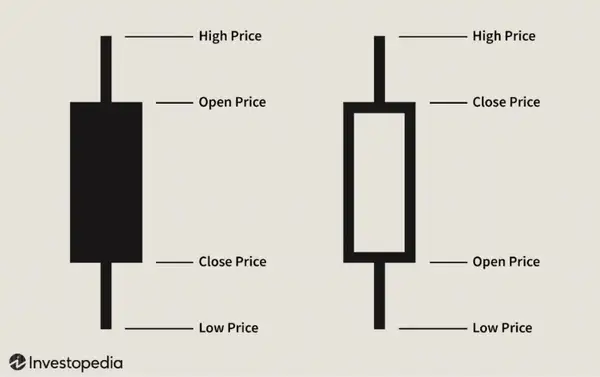
Either white and black or green and red. Candlesticks measure price action over a set length of time, with four hours, daily, weekly, and monthly presenting popular choices. The bottom side wick shows the low within the timeframe, the top side wick shows the high within the time frame, and the body shows the open and close. A green/ white candle means the close was higher than the open, and a red/ black candle means the inverse. Patterns appear, and traders use these as signals.
Choosing Relevant Indicators
Technical analysts have thousands of indicators to choose from, and their trading style will affect their choice. For simplicity, this article will outline several of the most basic indicators.
Moving Average
This helps filter out the noise and plots a single line of the average price over a desired period, with typical choices being 21 days, 50 days, 100 days, and 200 days. This indicator allows investors to see whether an asset is in an uptrend or a downtrend and can function as support and resistance.
Relative Strength Index
This momentum oscillator measures the change and speed of price action. It ranges between 0 and 100, with a reading over 70 hinting the stock is overbought and due a correction and a reading below 30 hinting the stock is oversold and due a rally.
On-Balance Volume
This indicator takes volume data and creates a single line. Price moving upwards should be accompanied by increasing volume, and a falling price should see less volume. Typically volume indicates how strong the movement is and confirms price action. A rapid soar in price with little volume will be dangerous for investors to chase.
Chart Patterns
Again, technical analysis has thousands of chart patterns that traders can study and learn. These patterns often become self-fulfilling, given the number of traders using them as signals. Two simple examples will be given.
The ascending triangle
A pattern that prophesizes an incoming breakout and is seen when the price bounces off resistance but continues to set higher lows. Traders draw a horizontal line across the resistance and an uptrend line along the support points.
Head and shoulders pattern
A pattern that often heralds a reversal in the overall market trend from bull to bear. This pattern has one central peak (the head) and two smaller peaks (the shoulders). If all three of these peaks fall to a similar support level (the neckline), probability dictates that the trend will reverse, and traders will begin selling or perhaps even shorting at this stage.
Trends and Key Levels
Technical analysts move with the market aligning themselves with the prevailing primary trend: bull or bear. Using moving averages and other indicators, traders will buy at support and sell at resistance in a bear market. Or short at resistance during a bear. A highly simplified strategy for an asset such as Bitcoin could be buying below the 200-day moving average and selling above the 200-day moving average. It might also be very useful if you're planning to short Bitcoin.
Combining Fundamental and Technical Analysis
Fundamental analysis focuses on thesis-driven investment, and technical analysis uses prior price action to predict future movement. Investors who blend these strategies gain a superior understanding of the market and achieve optimal execution. For example, an investor may find a stock underpriced by the market through fundamental analysis and then time their entry and exit using technical analysis. Incorporating both schools of thought naturally leads to a more holistic investment approach.
A dual approach grants investors a more granular understanding of the long-term trends and market cycles, naturally minimizing risk and improving accuracy. Given the proliferation of trading amongst retail and the expanding horizon of assets available to trade, investors who understand fundamental analysis will have a leg up on those who solely employ technical analysis. Investors who have a thesis on why they buy an asset outside of historical price movement can better weather volatility throughout market cycles brought on by global events and will naturally gravitate toward long-term growth projects- this pertains more directly to digital assets.
Fundamental and technical analysis are tools for investors and traders, and having more tools means a greater arsenal with which to engage with the markets. Both have shortcomings, but by employing an integrated strategy, investors can cover the weak points of both schools.
Conclusion
Fundamental analysis seeks undervalued stocks through financial analysis, and technical analysis uses market patterns to inform future price action. Fundamental analysis relies on market inefficiencies, and technical analysis looks at market psychology. Investors with an investment thesis- fundamental- will have a deeper understanding of the asset and can leverage market psychology- technical- to time entries and exits. Investors should not neglect either discipline, for fundamental will naturally draw them toward profitable assets, and technical will allow them to take advantage of irrationality.
Information is everything when it comes to investing and trading. Investors fluent in two schools have two separate languages to translate the markets and therefore see deeper into markets in multiple dimensions opening up more opportunities.

Disclaimer: All investments involve risk, and the past performance of a security, industry, sector, market, financial product, trading strategy, or individual’s trading does not guarantee future results or returns. Investors are fully responsible for any investment decisions they make. Such decisions should be based solely on an evaluation of their financial circumstances, investment objectives, risk tolerance, and liquidity needs. This post does not constitute investment advice.

Painless trading for everyone
Hundreds of markets all in one place - Apple, Bitcoin, Gold, Watches, NFTs, Sneakers and so much more.

Painless trading for everyone
Hundreds of markets all in one place - Apple, Bitcoin, Gold, Watches, NFTs, Sneakers and so much more.

